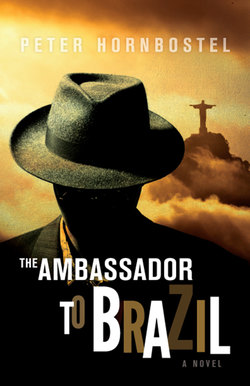Читать книгу The Ambassador to Brazil - Peter Hornbostel - Страница 3
На сайте Литреса книга снята с продажи.
ОглавлениеPreface
In mid-March 1964, a secret task force of United States warships and tankers set sail from the Caribbean bound for Brazil. The flotilla, which had the code name “Brother Sam,” included the world’s largest aircraft carrier, several destroyers, a troop carrier and three tankers. The United States later claimed that it was only intended to “show the American flag,” not invade, and that no one in the Brazilian military knew the task force was coming. In fact, neither was true. Although the flotilla never arrived in Brazilian waters, its actual purpose was to provide logistic and tactical support to the generals who were planning the coup. Of course they knew it was coming.
There were many in the United States government who were anxious to participate in the coup. The CIA was desperately seeking a way to resurrect its reputation, which had been shattered a few years earlier in the Bay of Pigs invasion of Cuba. Lincoln Gordon, the United States ambassador in Rio, a former Harvard professor, had achieved nothing by the embassy’s surreptitious contributions of millions of dollars to the political campaigns of right wing Brazilian politicians. He was anxious for the United States to achieve some kind of success that he could claim as his own. Meanwhile, the White House was seeking to establish President Lyndon Johnson as leader of the hemisphere, in place of John Kennedy, whose reputation in death remained far greater than Johnson’s own.
Although 50 years have passed since the “revolution to restore democracy” (as the CIA called it), much remains unknown about what the United States actually did, and what effect, if any, it had in bringing about the success of the coup. Declassified State Department cables have shed some light. Several CIA cables have also recently been declassified. But the operating cables that describe the activities of the Agency in Brazil remain classified. Presumably they contain information that the CIA prefers to keep secret, such as plans it may have had for the assassination of President Joao Goulart (as happened to President Allende in Chile several years later), the identity of its agents in Brazil, and details regarding Operation Brother Sam and its schedule.
Another question that has been completely buried is the risk of nuclear war between the United States and the Soviet Union triggered by Operation Brother Sam. The flotilla set sail less than two years after the Cuban missile crisis, at a time when Nikita Kruschev was still in power. The question is not mentioned in any publicly released United States government document.
In this work of fiction, Peter Hornbostel, legal advisor to USAID in Washington and Brazil from 1963 to 1968, tells the story of what the role of the United States may have been. Ambassador Anthony Carter, the protagonist of the book, was kept in the dark by the CIA regarding much of what was going on. The same may have happened to the actual US ambassador at the time, Lincoln Gordon. Gordon may not have known who was actually in charge of the CIA’s operations in Brazil. Neither did Carter.
US President Lyndon Johnson, Brazilian Marshal Castelo Branco, and the Brazilian generals (Costa e Silva, Kruel, Geisel, Golbery, and others) were, of course, alive and well at the time of the coup. However, all words, actions, expressions, or intentions of any character are entirely fictional.
This is also a love story. Marina, Ambassador Carter’s mistress is, of course, fictional as well. What a pity….
—P.A.H.
